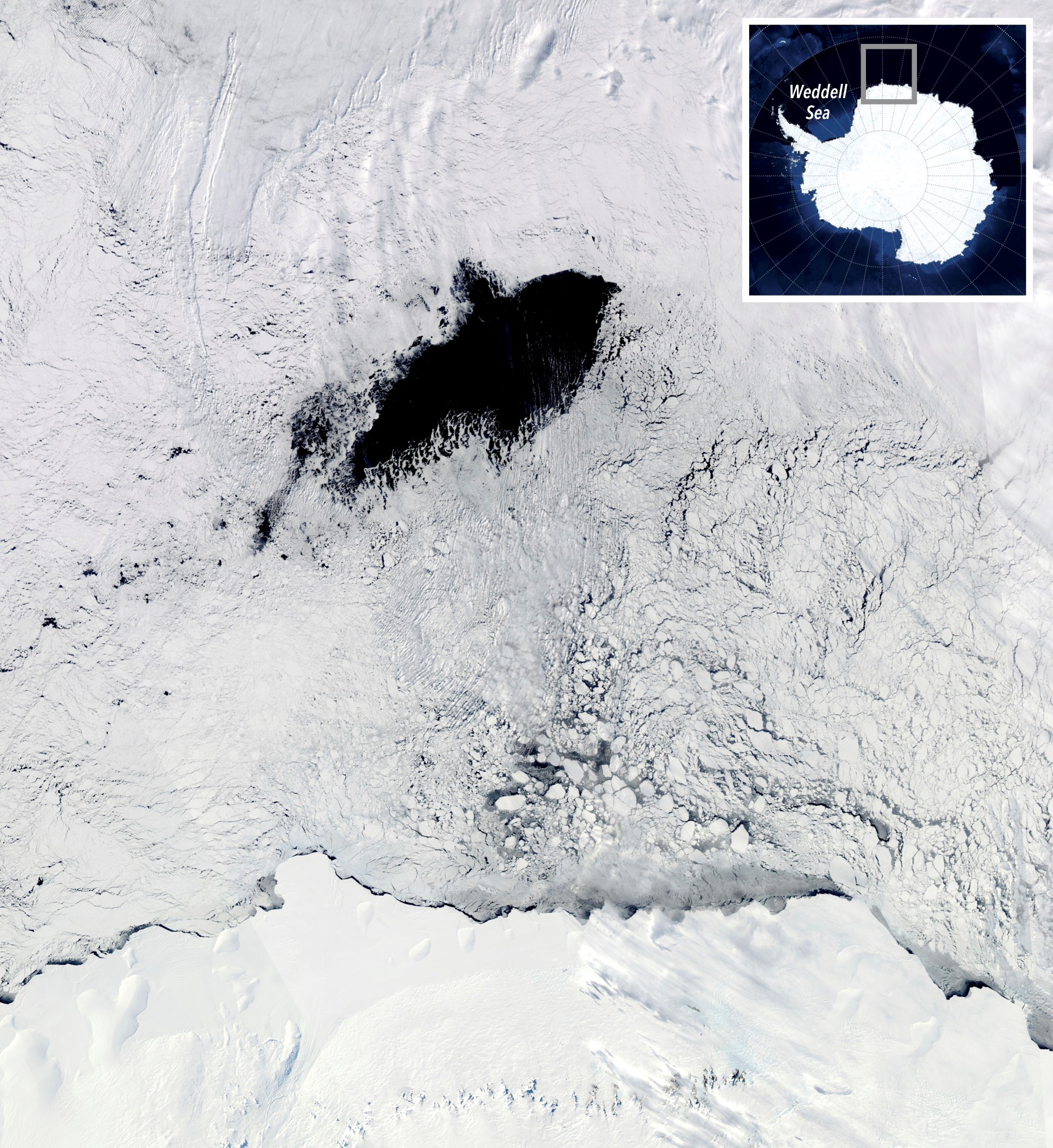Mysterious Hole in Antarctic Sea Ice Explained by Robots and Seals
Credit to Author: Becky Ferreira| Date: Mon, 10 Jun 2019 19:40:27 +0000
A gigantic hole in Antarctica’s sea ice has perplexed scientists for decades.
Now, with the help of robots, satellites, and seals with sensors strapped to their heads, a team of researchers has discovered that climate, salt levels, and an underwater mountain all contribute to the weird recurring phenomenon, according to a study published Monday in Nature.
The massive “polynya,” which is the term for an area of open water surrounded by sea ice, occasionally appears in the Weddell Sea in the Antarctic northwest, seemingly at random. The size and frequency of the offshore polynya are not closely correlated with temperatures, suggesting a more complex mechanism drives its formation process.
The hole first attracted the attention of scientists in the mid-1970s, when early Earth-observation satellites recorded a polynya the size of New Zealand in the frozen sea. Beginning in 2016, the first large polynya in decades showed up in the Weddell Sea, creating an area of open water that eventually reached the size of South Carolina.

A team led by Ethan Campbell, a University of Washington doctoral student in oceanography, jumped at the opportunity to observe the mysterious hole and shed light on the mechanisms that create it.
Campbell and his colleagues amassed data about the recent holes from satellites, weather stations, floating sensors, and instrument-carrying elephant seals.
These seals are especially helpful to scientists studying Antarctica because they regularly dive around 600 meters below the ocean surface, and sometimes surpass 2,000 meters of depth.
As a result, seals with sensors mounted on their heads can obtain measurements from multiple layers of the mysterious Southern Ocean, which would be difficult to collect otherwise. The instruments are normally glued to the seals’ heads using epoxy and fall off naturally after a few months, or when the seals undergo their annual moult.
The measurements revealed that the Weddell Sea recently experienced saltier waters and stronger storms than usual, which are likely the key triggers for polynya formation, according to Campbell’s team. Both conditions encourage warmer ocean water to upwell to the surface, where it melts sea ice to create the characteristic hole.
While salinity and storm intensity varies from year to year, the polynya always appears around the same place in the eastern Weddell Sea. That’s because it is located above a huge underwater mountain called Maud Rise. Ocean currents that form around this mountain create a vortex that concentrates warmer water under the same patch of sea ice.
“This study shows that this polynya is actually caused by a number of factors that all have to line up for it to happen,” said co-author Stephen Riser, a UW professor of oceanography, in a statement. “In any given year you could have several of these things happen, but unless you get them all, then you don’t get a polynya.”
The team notes that the climate crisis, which influences both ocean salinity and storm strength, is likely to have an effect on Antarctic polynyas. But it is not yet known whether warming global temperatures will lead to fewer or more holes in the sea ice.
“We need to improve our models so we can study this process, which could have larger-scale climate implications,” Riser said.
This article originally appeared on VICE US.